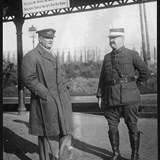Volume VI, song 542 page 561 - 'O gude ale comes &c' - Scanned from the 1853 edition of the 'Scots Musical Museum', James Johnson and Robert Burns (Edinburgh and London: W. Blackwood & Sons, 1853)
More from this collection View all
Exhibitions and events from this museum
We don't have anything to show you here.



































